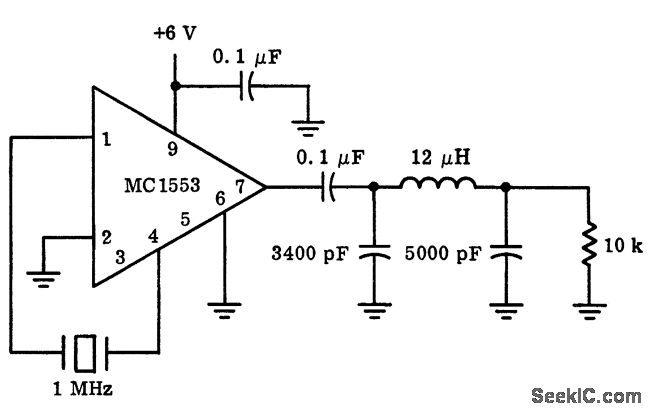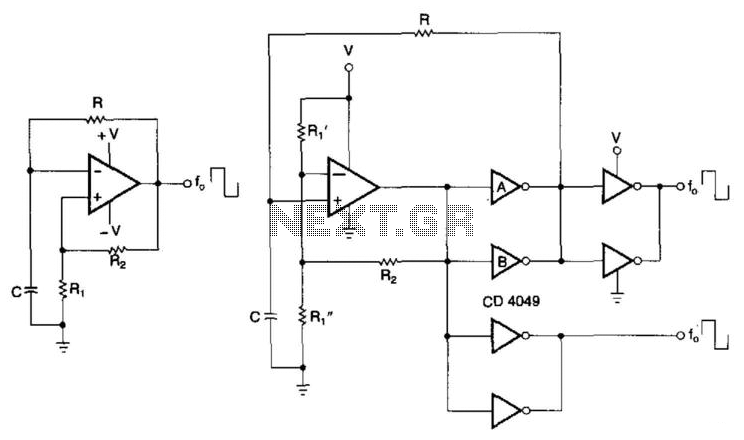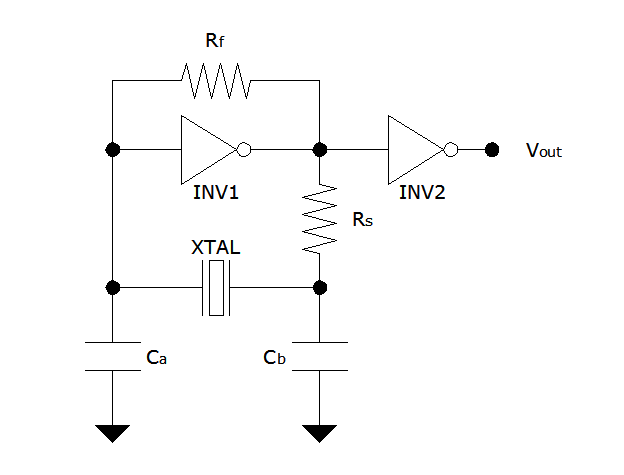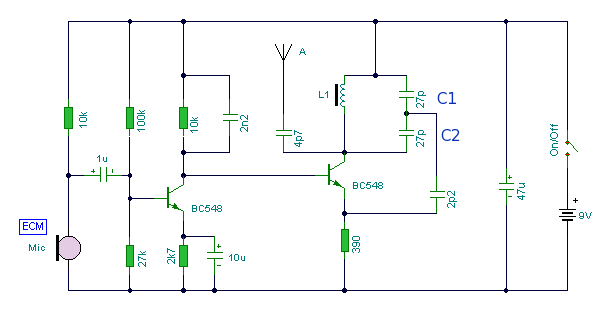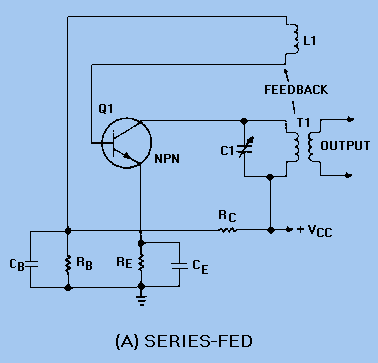
Colpitts oscillator
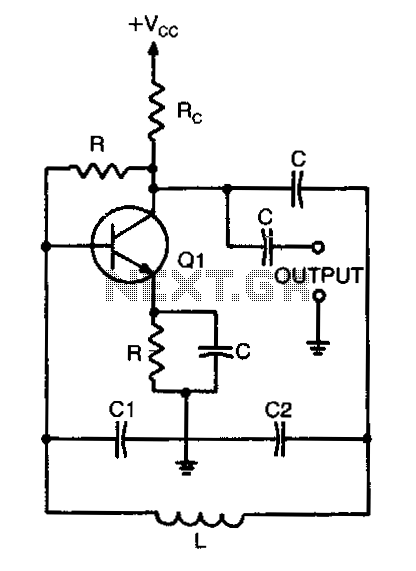
When calculating the resonant frequency, use the formula C1C2/(C1+C2) for the total capacitance of the L-C circuit.
In an L-C (inductor-capacitor) circuit, the resonant frequency is a critical parameter that determines the frequency at which the circuit will oscillate. The resonant frequency can be calculated using the total capacitance of the circuit, which is derived from the individual capacitances of capacitors C1 and C2 connected in parallel. The formula C_total = C1C2/(C1+C2) is used to compute the total capacitance when capacitors are in parallel, allowing for an accurate assessment of the circuit's behavior at resonance.
The resonant frequency (f_r) can then be calculated using the formula:
f_r = 1 / (2π√(L * C_total))
Where L is the inductance of the inductor in the circuit. This equation shows how the resonant frequency is inversely proportional to the square root of the product of inductance and total capacitance. Understanding this relationship is essential for designing circuits that require precise frequency tuning, such as oscillators, filters, and radio transmitters. Proper calculation of the total capacitance and resonant frequency ensures optimal performance and stability of the circuit.When calculating its resonant frequency, use C1C2/C1+C2 for the total capacitance of theL-C circuit.
In an L-C (inductor-capacitor) circuit, the resonant frequency is a critical parameter that determines the frequency at which the circuit will oscillate. The resonant frequency can be calculated using the total capacitance of the circuit, which is derived from the individual capacitances of capacitors C1 and C2 connected in parallel. The formula C_total = C1C2/(C1+C2) is used to compute the total capacitance when capacitors are in parallel, allowing for an accurate assessment of the circuit's behavior at resonance.
The resonant frequency (f_r) can then be calculated using the formula:
f_r = 1 / (2π√(L * C_total))
Where L is the inductance of the inductor in the circuit. This equation shows how the resonant frequency is inversely proportional to the square root of the product of inductance and total capacitance. Understanding this relationship is essential for designing circuits that require precise frequency tuning, such as oscillators, filters, and radio transmitters. Proper calculation of the total capacitance and resonant frequency ensures optimal performance and stability of the circuit.When calculating its resonant frequency, use C1C2/C1+C2 for the total capacitance of theL-C circuit.

